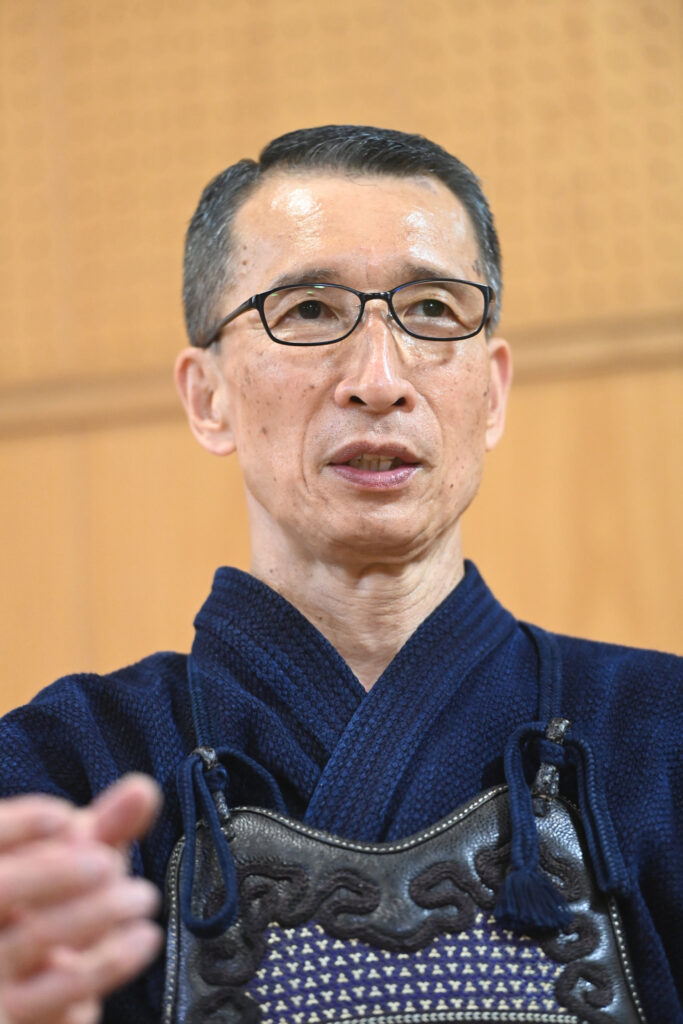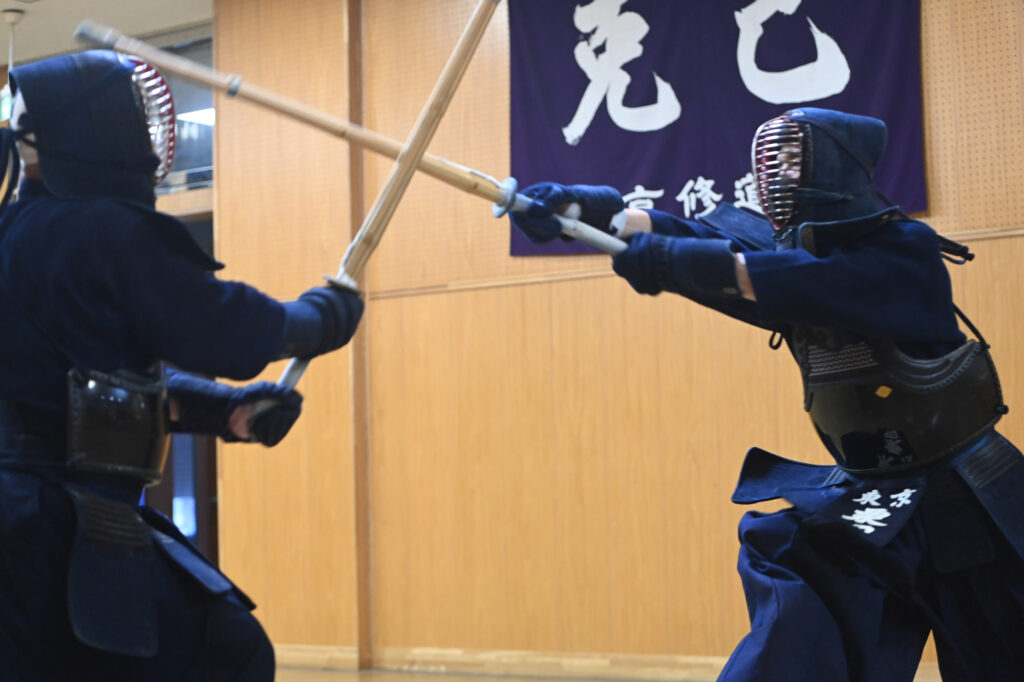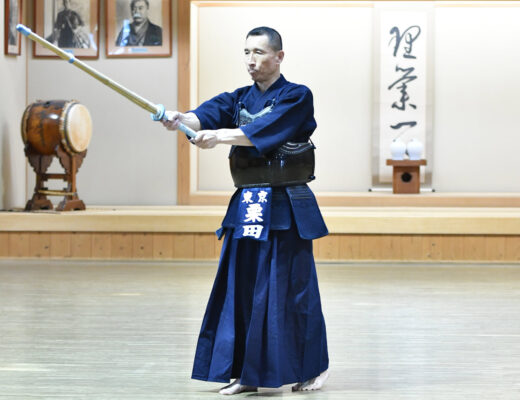KENDOJIDAI 2021.9
Photography: Nishiguchi Kunihiko
Composition: Tsuchiya Tomohiro
In cooperation with Tokyo Shudokan
Translation: Pepijn Boomgaard
A strike with Sae and vigor will be seen as Ippon during examinations and matches. What is the mechanism of this? We asked Kurita Sensei, who is known for not hitting or striking, but rather slashing with his Shinai, and who embodies the orthodox school of Kendo.
Kurita Waichiro (Hanshi 8th Dan)

Historically, Kendo developed from the practice of cutting your opponent with a real sword. Therefore, attacking with a Shinai is not about hitting or striking. It is important to cut correctly. In accordance with this idea, the Sae of a strike is very important. You must, from a correct Kamae, use correct Furikaburi (upswing), correct Furioroshi (downswing), and Tenouchi to strike your opponent with Sae (clarity). In this article, I would like to explain how to, from a correct Kamae, control your body and Shinai. In order to strike with Sae, Tenouchi is important. Tenouchi refers specifically to the following four things:
- How the left and right hand hold the Tsuka.
- How to apply power.
- The tension and balance of both hands when striking.
- Relieving tension from both hands after striking.
These factors combined create Sae. We add force to the weight of the Shinai and strike with speed. The quicker we can do this, the stronger our strike. If we don’t instantaneously use Tenouchi, the strike will lose speed and will lack Sae. If the Shinai is heavy, or you strike with too much force, your Tenouchi will not be effective and your strike will be sluggish and slow, and lack Sae. It is vital to strike without force and hesitation. Furthermore, the vigor of a strike depends on Maai. Only by striking from a suitable distance with correct posture and correct footwork, using correct Tenouchi to strike the target with Sutemi (striking with everything one’s got), will vigor be created. Thus, striking with Sae and vigor requires the comprehensive power of Kendo. For example, even if you can apply these skills to your Keiko or Suburi, in the end you must be able to use them in a real match. However, this is the difficult part. As the distance decreases, you start to think about whether to strike or defend, or whether your opponent will strike or not. This leads to unnatural power entering your body. Especially if you put too much power into your upper body, shoulder and arms, you will lose your correct Kamae, and your grip and and the trajectory of your swings will change. This results in a strike without a resemblance of Sae or vigor. In other words, if you do not apply Seme, break your opponent’s posture and strike naturally with that same vigor, you will not acquire Sae or vigor in your strikes. Therefore, a strike that shows these qualities is what will be regarded as Ippon in a match or examination. It is important to review and repeat the correct way of doing things regularly, so that you can apply them in a real match as well. The only way to acquire a good Ippon is by practicing a lot. There are no shortcuts. At the same time as you learn how to strike with Sae and vigor, you have to learn about the opportunity to strike. Opportunities in Kendo are constantly changing as you and your opponent move. Opportunities arise in between these movements, and they are instantaneous and thus easy to miss. When analyzing these opportunities theoretically, they can be broadly divided into the following seven categories:
- Debana.
- When someone retreats.
- The moment a technique ends.
- When someone stops moving.
- When someone blocks an attack.
- When someone inhales.
- When someone succumbs to one of the “four sicknesses”.
True technique is to strike unconsciously without pause at the moment one of these opportunities presents itself. Opportunities do not arise if one passively waits. It is essential to actively create these opportunities yourself by assertively pressuring your opponent with a correct posture and full spirit.

Correct Kamae is the foundation of Sae and vigor
The rest of this article is only available for Kendo Jidai International subscribers!



